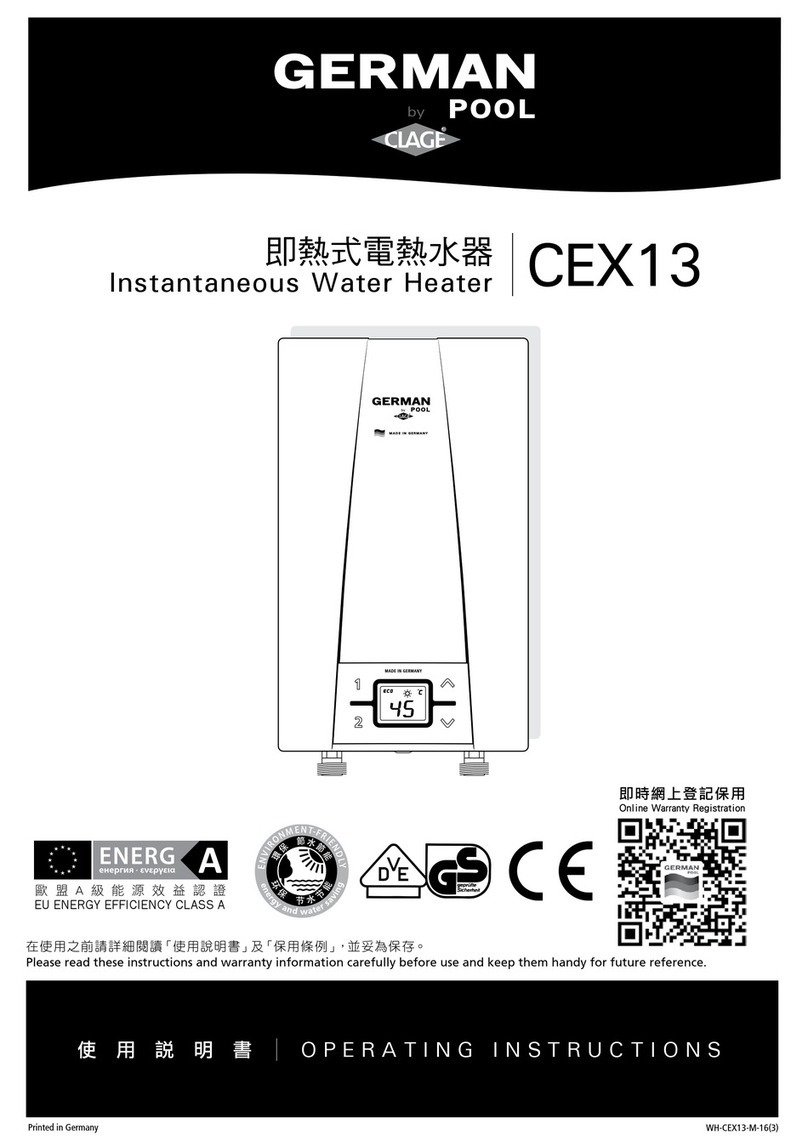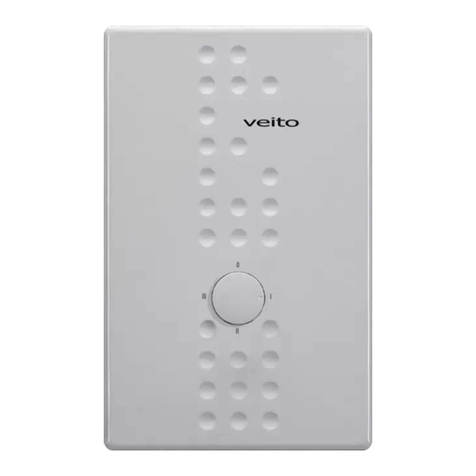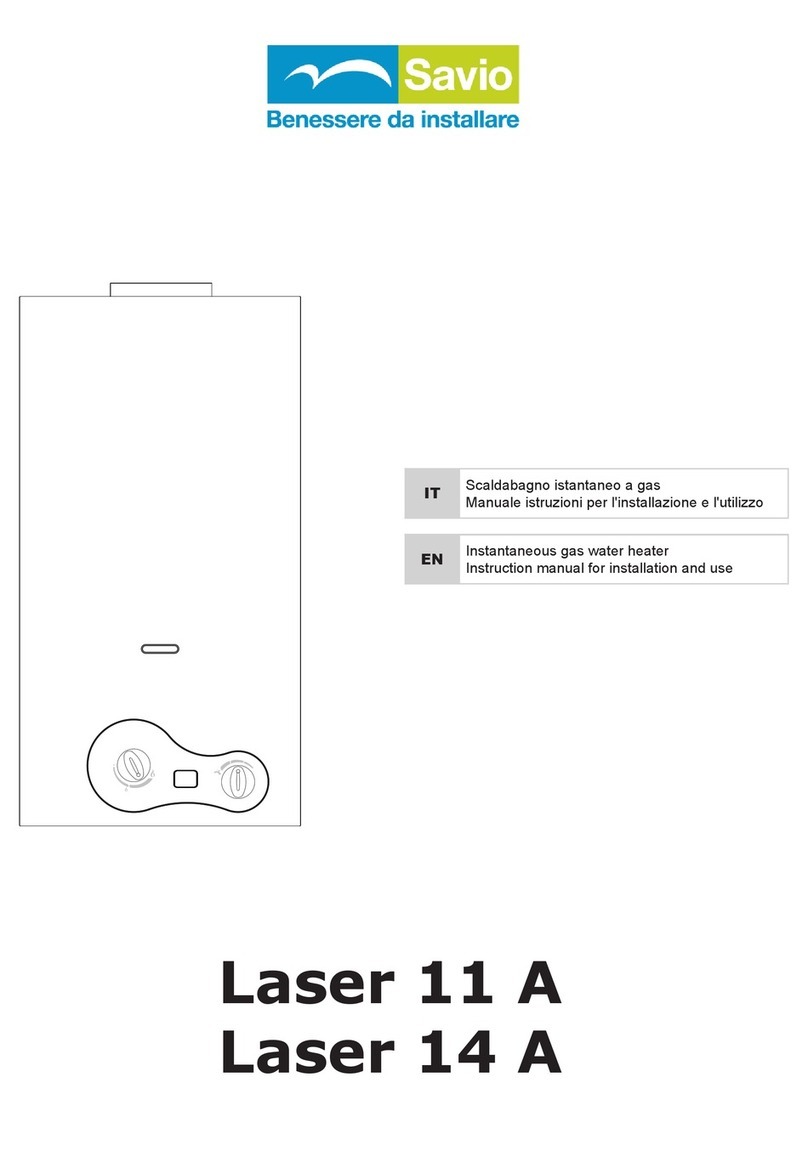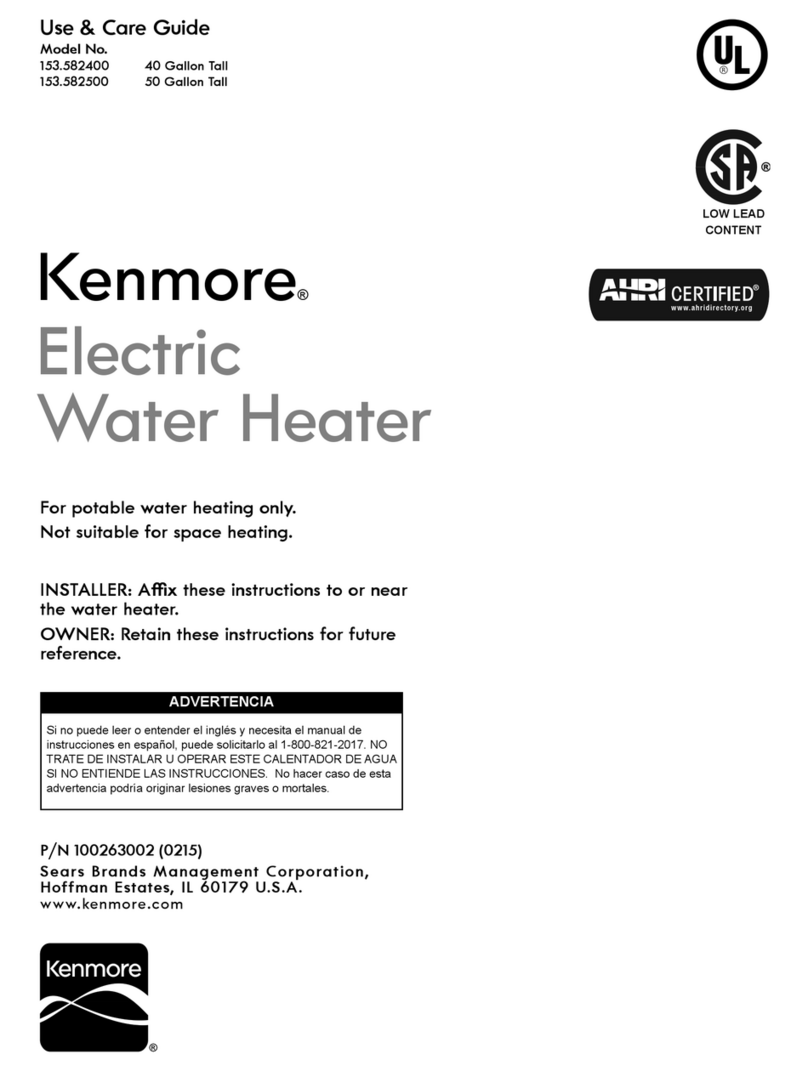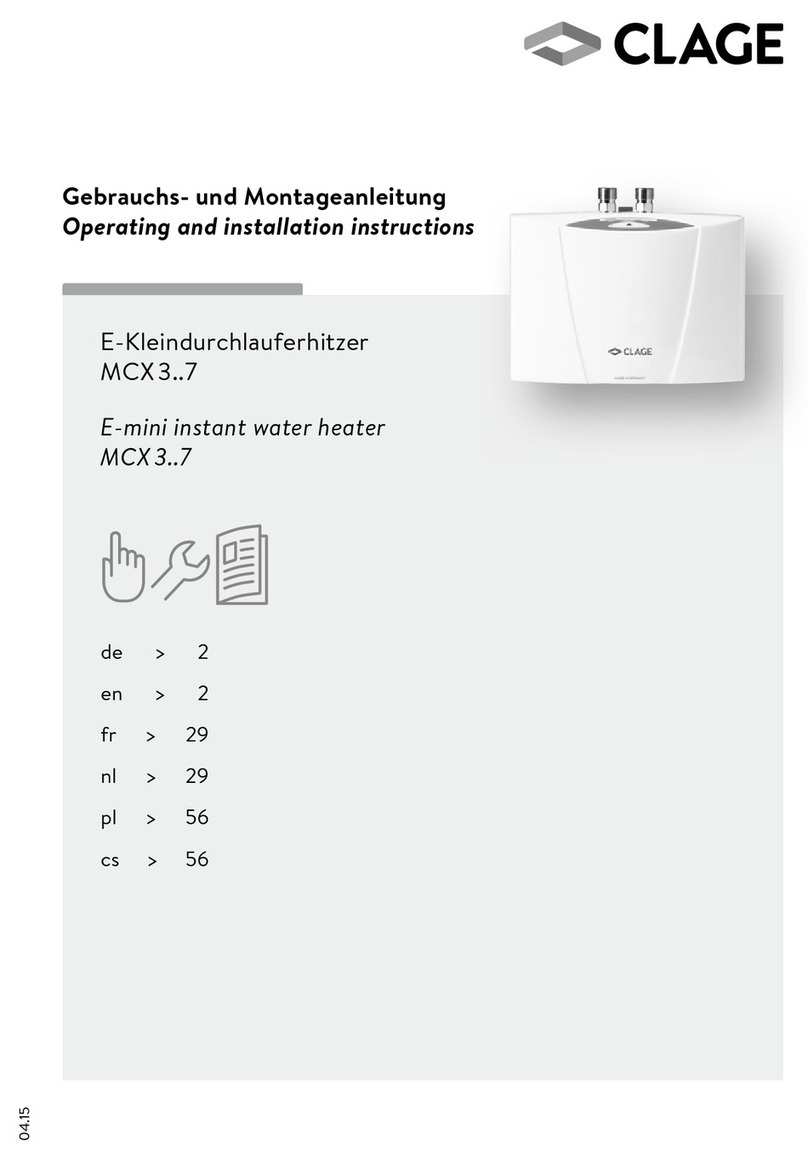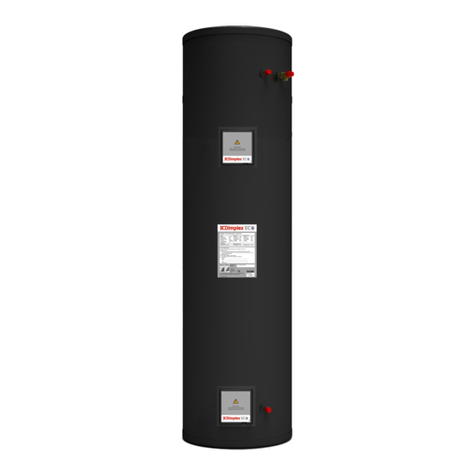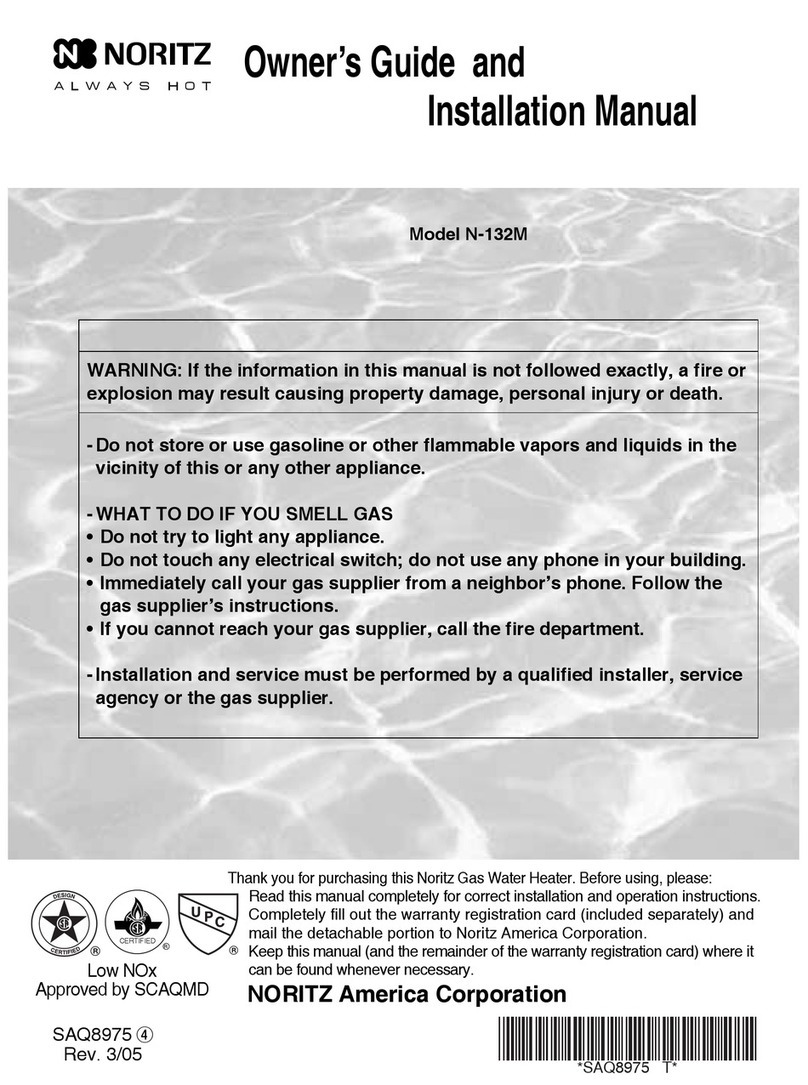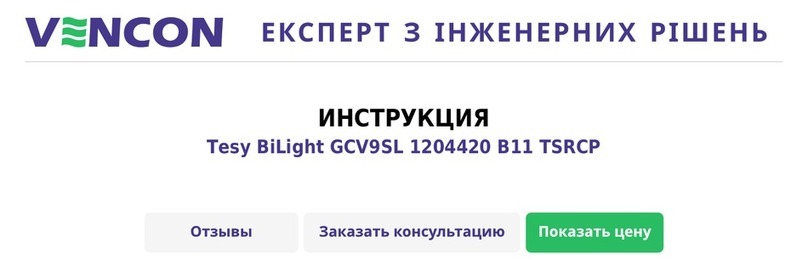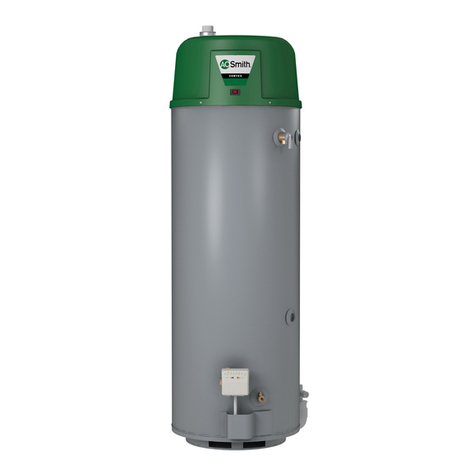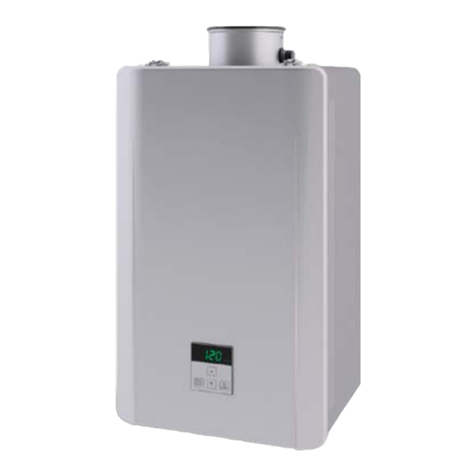
HAMWORTHY HEATING LTD
FERNDOWN
500001111/C
1.0 INTRODUCTION
1.1 This appliance must be installed by a competent
person holding 'CORGI' registration or equivalent. All
installations MUST conform to the relevant Gas Safety
and Building Regulations. Health & Safety requirements
must also be taken into account when installing any
equipment. Failure to comply with the above may lead
to prosecution.
1.2 The appliance is intended for use on Group H
Natural Gas (2nd Family) and LPG-Propane (3rd
Family). The information relating to propane firing is to
be found in Appendix ‘A’. The appliance MUST NOT
use gas other than that for which it was designed and
adjusted.
1.3 The Ferndown is a high efficiency, gas fired, fully
modulating, room sealed instantaneous water heater
with the included option of connecting to and supplying
central heating systems. For performance data refer to
Figure 2.2.
1.3.1 The burner fitted to the Ferndown is of the fan
assisted pre-mix type. Operation is initiated by a full
sequence ignition control that incorporates a Hot
Surface Ignition system and rectification supervision of
the flame across the range of outputs.
1.3.2 The appliance is designed for direct connection to
a room sealed or conventional flue system - HHL
supply. The Technical Data for the various flue
arrangements is given in Section 6. No draught diverter
is fitted to the boiler nor is a fixed diverter required in the
flue system. However a draught stabiliser is
recommended for some installations.
1.3.3 The Ferndown is intended as a single stand alone
unit not suitable for modular application supplying
domestic hot water and central heating within
Commercial / Industrial premises only.
1.3.4 The Ferndown is fitted with an integral circulator
pump suitably sized to ensure that minimum water rates
are maintained through the low water content primary
heat exchanger.
1.3.5 The Ferndown uses a brazed plate heat
exchanger for DHW generation. To ensure continuous
and reliable operation, refer to section 3.2.2 regarding
water conditioning.
1.4 The Ferndown is suitable for direct connection to
domestic hot water supplies and to fully pumped un-
vented (pressurised) heating systems. Care must be
taken to ensure all extra safety requirements are
satisfied and that the relevant interlocks will shut the
Ferndown off should a high or low pressure fault occur.
The Ferndown primary loop circuit is fitted with a
pressure switch, factory set at 0.5 bar which shuts the
appliance down should the primary water pressure fall
below the factory set threshold.
Note: The Ferndown is not suitable for direct connection
to gravity circulation systems.
When connecting to pressurised central heating circuits
the pressurisation unit must also incorporate a low level
water switch which protects the water pumps, and will
directly or indirectly shut down the boiler plant should a
low water condition occur. Consideration should also be
given to the maximum working pressure of the
appliance as given in Section 2: TECHNICAL DATA.
Consult Hamworthy Heating Technical Department for
help or assistance if in doubt.
1.5 N.B. For space heating applications, the
Ferndown has a constant flow (non-adjustable)
temperature of 80°C, therefore thermostatic
radiator valves should be used to control the
temperature.
2.0 TECHNICAL DATA
2.1 The Ferndown data plate giving details of model
and serial number is located on the inner boiler casing.
Overall dimensions are shown in Figure 2.1.
2.2 General Information and Technical Data relating
to Natural Gas is shown in Figure 2.2.
Technical data relating to propane firing can be
found in Appendix ‘A’.
2.3 Screw threads: All screw threads used in the
Ferndown range of boilers conform to the following:-
ISO 7/1 or ISO 228/1 for pipe threads where applicable.
ISO 262 for all general screw threads.
1
